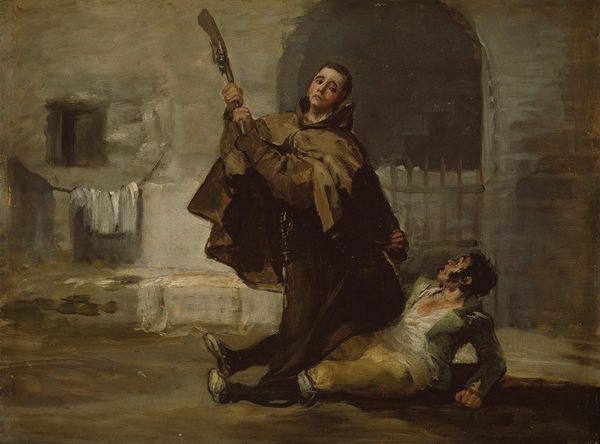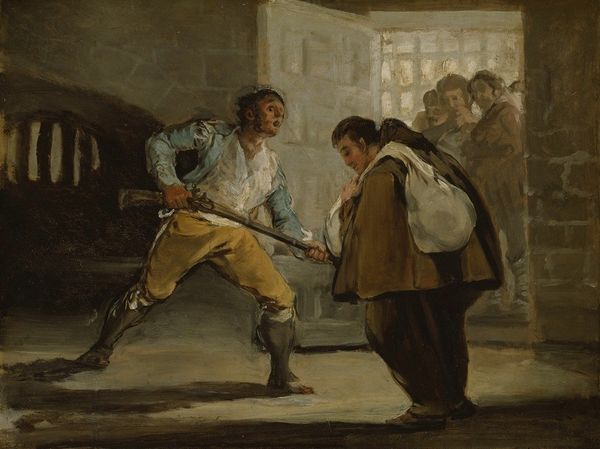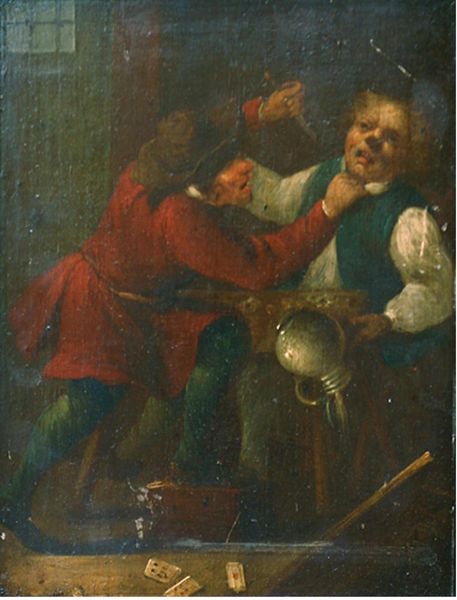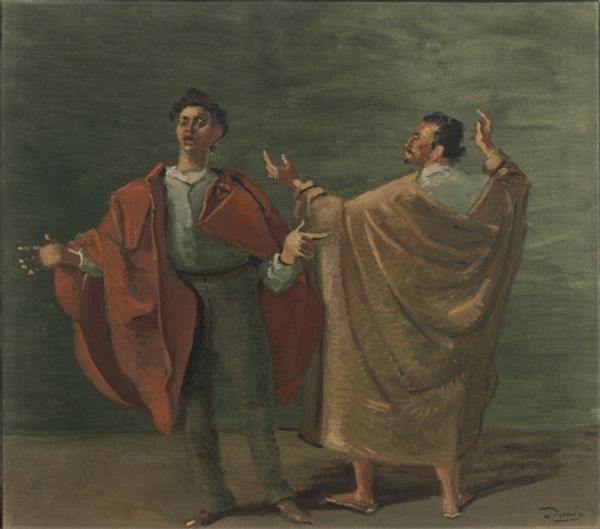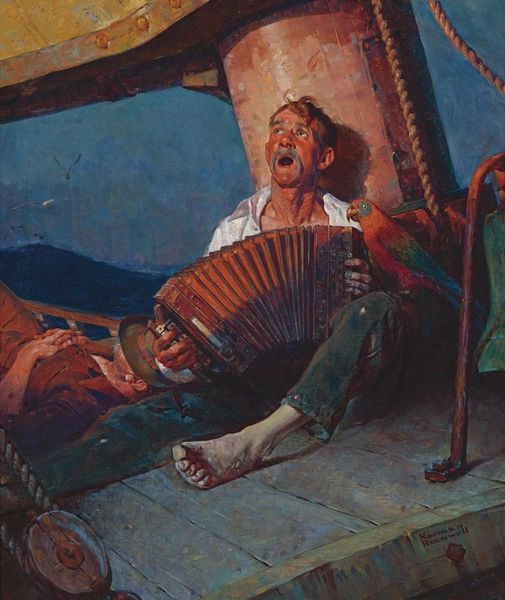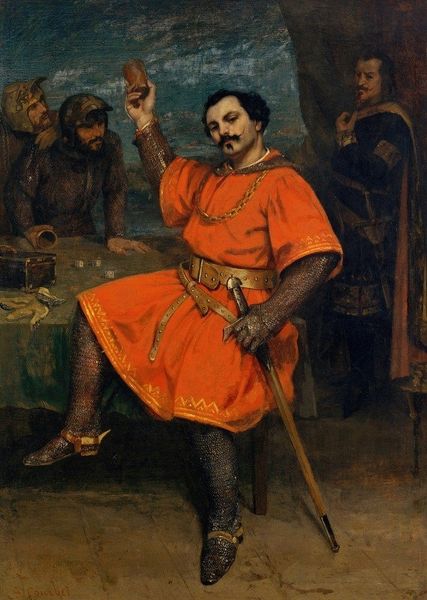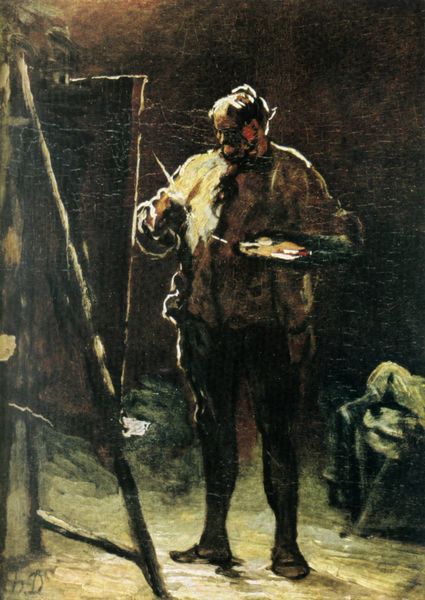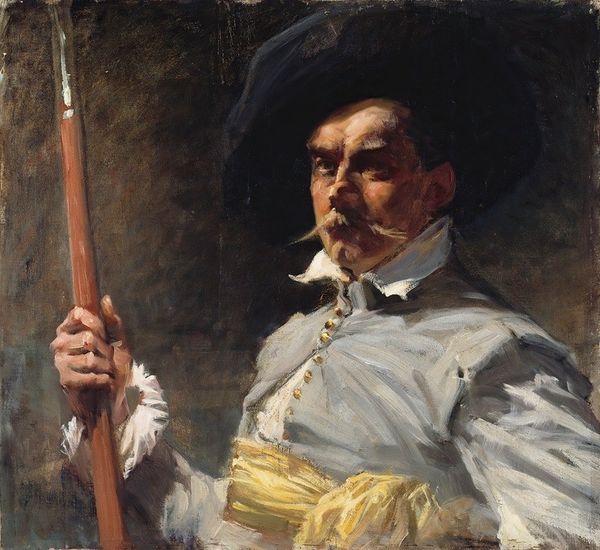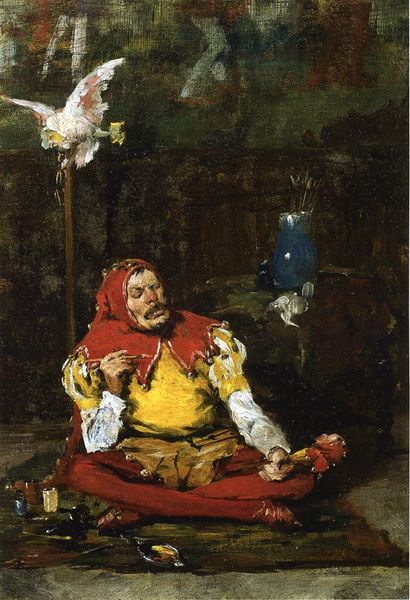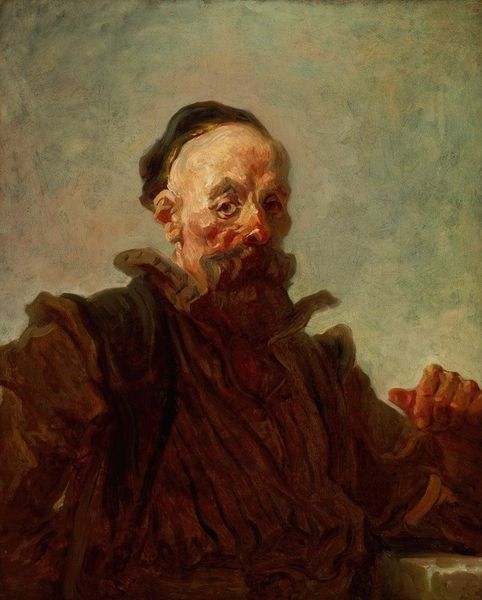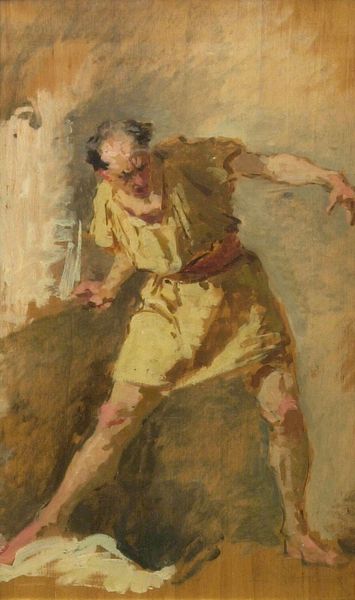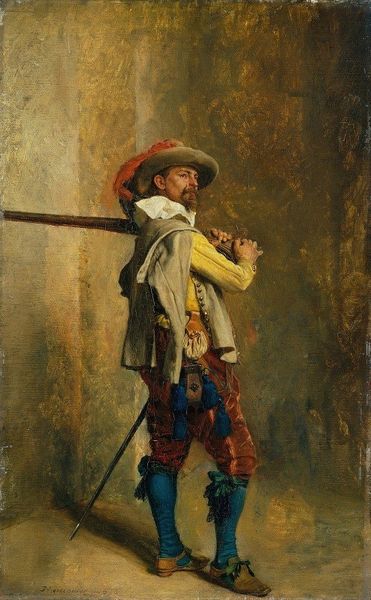
Dimensions: 222 x 148 cm
Copyright: Public domain
Curator: Here we have José Garnelo’s “A La Guerra!”, an oil on canvas created in 1885. Editor: It’s powerfully tragic. The immediate impact is how tangible the grief feels; it's thick, like the impasto paint. Look at the textures he's coaxed out of the oil to express so much raw emotion. Curator: Indeed. Garnelo was working within the academic tradition, but also engaging with Realism and Romanticism. The painting reflects anxieties of the late 19th century; a narrative charged with patriotism alongside intimate human drama. It speaks to the tumultuous political atmosphere in Spain at that time. Editor: You see it so clearly in the materials, don't you? That heavy canvas, the pigments—all testify to a specific moment of labor and resource. It's not just about aesthetics; it's a crafted object carrying cultural weight, displaying what the materials meant at that point in time and place. I want to know where the paint came from and who made it! Curator: The narrative structure reinforces these points. A man, presumably the father, heading off to war, leaving behind a distraught wife and children. His raised arm, whether in a call to action or despair, creates tension. The painting makes palpable a disruption of domestic stability, emphasizing the social cost of military conflict. Editor: Absolutely. The small details too, even a child's toy lying discarded, underscore the material consequences of war; they reveal the artist's concern not just with individual feelings but with how wider conflicts affect lives, labor, and resources. Even the light, almost theatrically positioned, adds another layer, showcasing the contrast between domestic and political worlds. Curator: The brushwork certainly captures an atmosphere of intense drama, showcasing not just his skill, but that broader social concern. It reminds us that art is seldom created in a vacuum, it acts as a barometer for historical climates. Editor: It's incredible how paint and canvas transform into a moment pregnant with loss and longing. We see more than paint; we observe the raw reality of a war-torn moment solidified into art. Curator: I agree, analyzing “A La Guerra!” today allows a potent moment to stir complex understanding regarding social trauma represented in fine art, giving a vivid insight of this era.
Comments
No comments
Be the first to comment and join the conversation on the ultimate creative platform.
